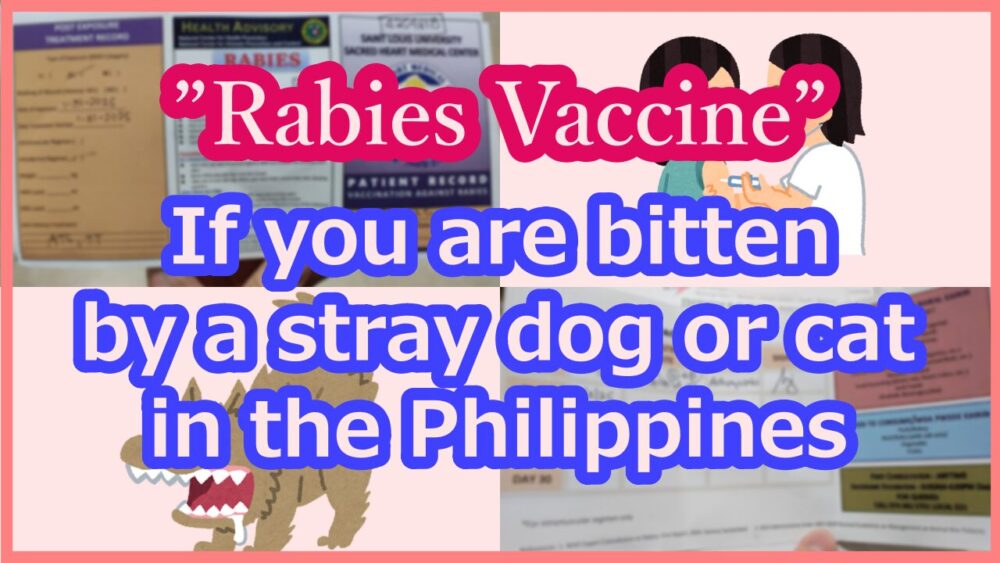Even if your days are smooth sailing during your study abroad, there is always a possibility that you may encounter unexpected accidents.
The most common ones are stomach aches and diarrhea. If symptoms arise, it’s important to seek medical attention promptly.
However, there are also cases like this…

I once attempted to pet a stray cat and it scratched me!
In fact, this is a very dangerous situation.
This article is going to present an actual case of rabies vaccination that happened to a Japanese student, as well as inform you about the response procedure and cost sensitivity.
About Rabies
Let’s start by taking a moment to understand what RABIES is.
Rabies is a disease that’s spread through contact with infected animals. It’s a serious illness, and unfortunately, it’s said to be 100% fatal.
It’s always best to be careful, especially when traveling abroad, and avoid approaching dogs or cats, as they might be carrying the disease.。

It’s really rare that your neighbor dog or cat is carrying rabies, and the likelihood of infection or disease is not high.
But, it’s important to remember that the 100% fatality rate is a serious concern. Even if your pet doesn’t show any symptoms, it’s essential to be careful and watch for any signs of rabies.
All of our household dogs in Japan are required to be vaccinated against rabies. Because of this, we are so grateful that we don’t hear about any cases of rabies in our community.
The same is true in the Philippines, where vaccination is mandatory. It’s not as common as in Japan, but it’s still important.

How you feel about this number depends on you. But it’s important to remember that there’s always a little bit of risk involved.
Vaccination Cases
I’ve been studying at a language school in Baguio for over a year now, and in that time I’ve had the opportunity to administer two rabies vaccinations.
2 rabies response cases
Student A
(May-2024)
She was out shopping at the city supermarket when, out of the blue, a stray cat came up to me. She bent down to pet it, and it scratched her thigh.
In the case of Student A, it was clear from the start that they needed a vaccination because they had visible injuries.
StudentB
(January-2025)
While shopping at a nearby convenience store, she felt something strange on my ankle. She looked around and saw a sweet little kitten. She wasn’t sure, but she thought the kitten might have been bit or scratched.
In the case of Student B, thankfully no wounds were found. Even so, it was still really important for him to get the vaccine.
Both students came to me first to ask me to decide whether they should go to the hospital or not.
Given my position, I could only offer them the suggestion of going to the hospital. I wish I could take responsibility for their well-being, but I can’t. I wish I could say, “It’s going to be all right,” but I can’t.
I personally thought that Student B’s case didn’t require any vaccinations because they didn’t have any visible wounds.
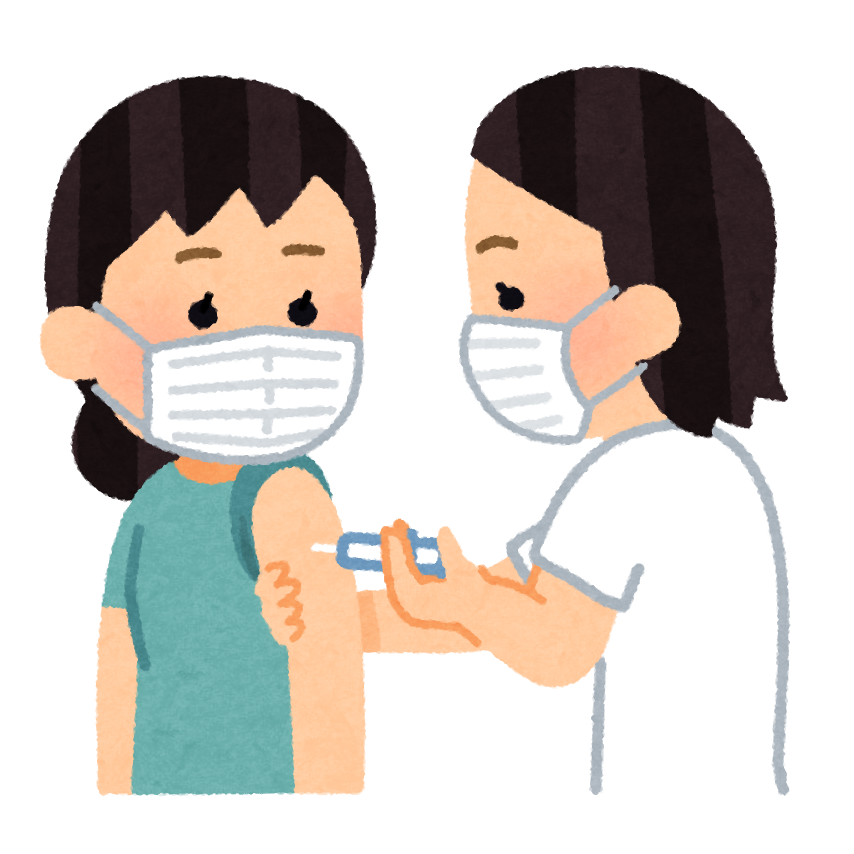
The doctor said it was necessary. The hospital doesn’t want to take responsibility either.
So, when you’re thinking about whether you need to be vaccinated against rabies, you’re in a really important situation.
The only people who can decide whether to get the vaccine or not are those who are confident that they will never get it and can take responsibility for it themselves.
Rabies Vaccination Process
If you’re concerned that your pet might have caught rabies, there are some steps you can take.
First, it’s important to remember that there’s a time limit for the first vaccination. The time limit is 24 hours from the moment of injury.
- 1st dayCleaning and disinfecting wounds
Immediately carried out by yourself
- 1st dayMedical interview, 1st vaccination
*Within 24 hours
- 3days2nd vaccination
- 1week3rd vaccination
- 2week(4th vaccination)
- 4week(5th vaccination)
It’s probably an immune response, but I’m no expert. I’m no expert, so I’ll hold off on the particulars. I’d say 24 hours is the general timeframe, but it really depends. The sooner, the better, and the more effective, I’ve found. No matter if it’s a holiday or nighttime, it’s always best to respond quickly.
There is some important infomation about the rabies vaccination clinic at the University Hospital of St. Louis in Baguio.
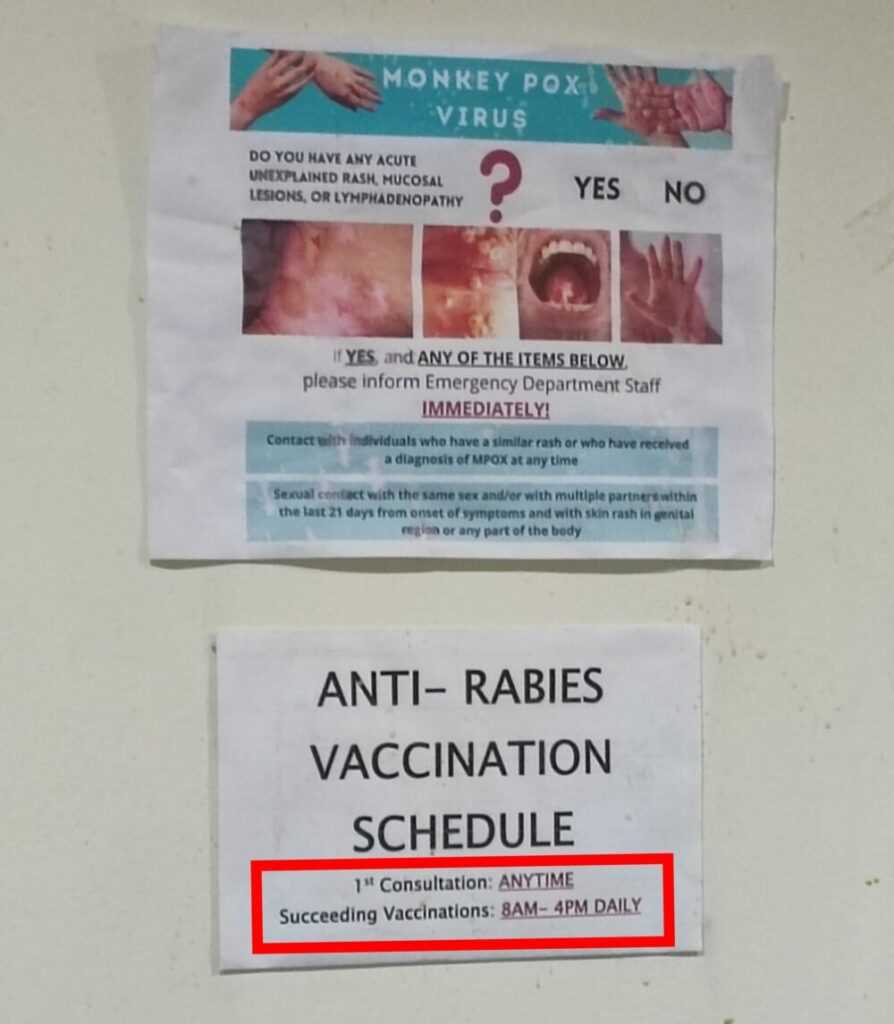
1st Consultation Anytime ANYTIME
succeeding vaccinations 8AM-4PM DAILY
As I mentioned earlier, getting the vaccination against rabies is not done in one visit. It’s a process that takes several visits over a period of time. You’ll need to come back for three to five visits.
On the first day, you’ll come back for three days, then one week, then two weeks, then four weeks, and finally, up to one month.
The specific details of these visits, like the number of doses or the duration of each visit, depend on a few things: the symptoms you’re showing and the type of vaccine.
※5 times vaccination(Student A)
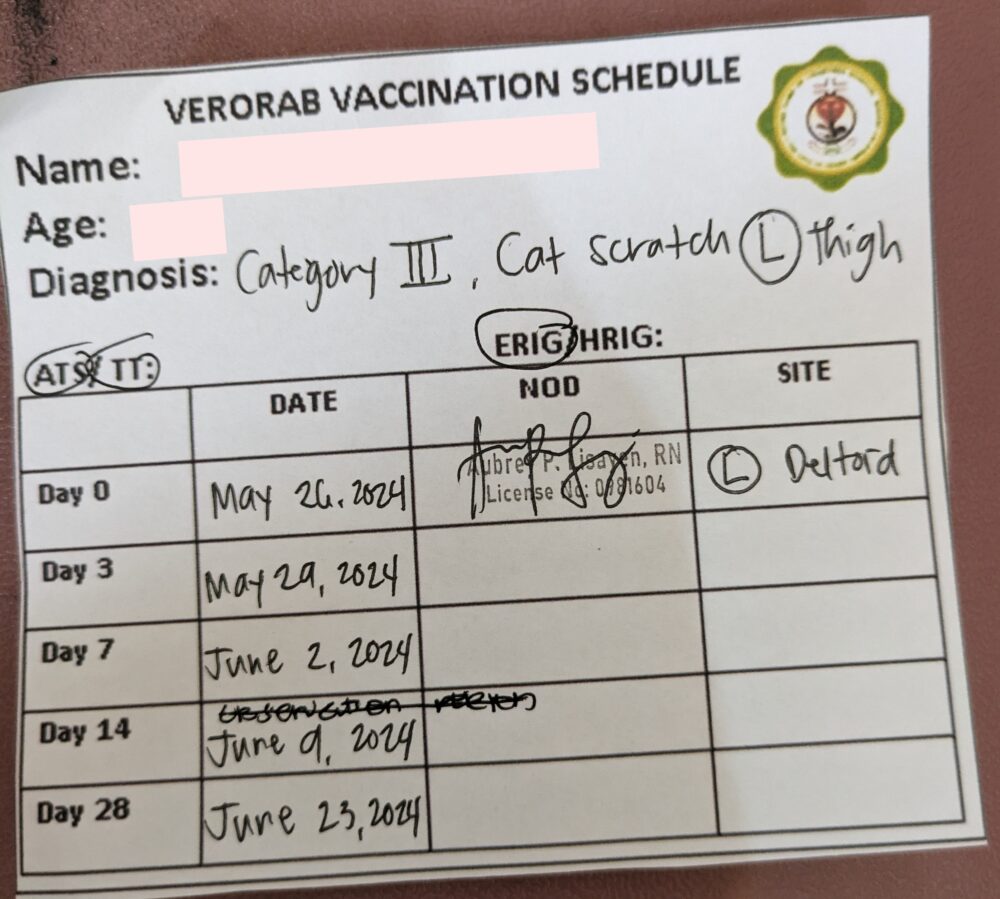
※3 times vaccination(Student B)
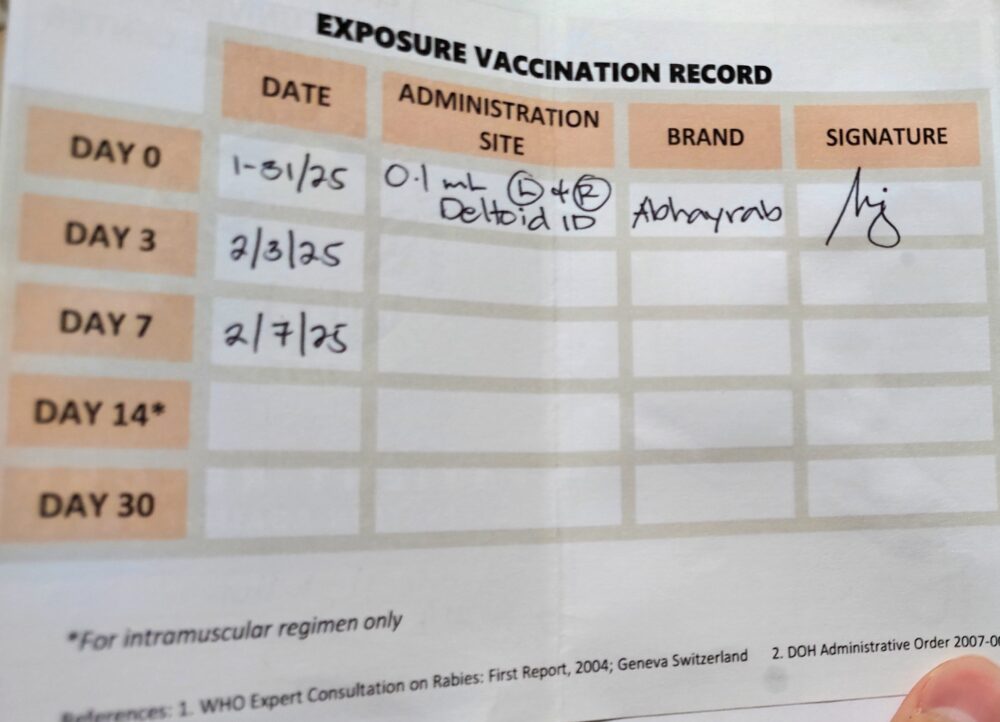
Student A used Notre Dame Hospital and received 5 vaccinations. Student B used St. Louis Hospital and received 3 doses.
All vaccinations must basically be completed in the Philippines. This is because there is not enough vaccine in stock in Japan. If you are unable to complete the vaccinations by your original scheduled return date, you will need to change your flight.
How to see a doctor
If you are on vacation or do not have overseas insurance, you will need to go to a local hospital without an appointment.
The ER (Emergency Room) is basically the emergency room.
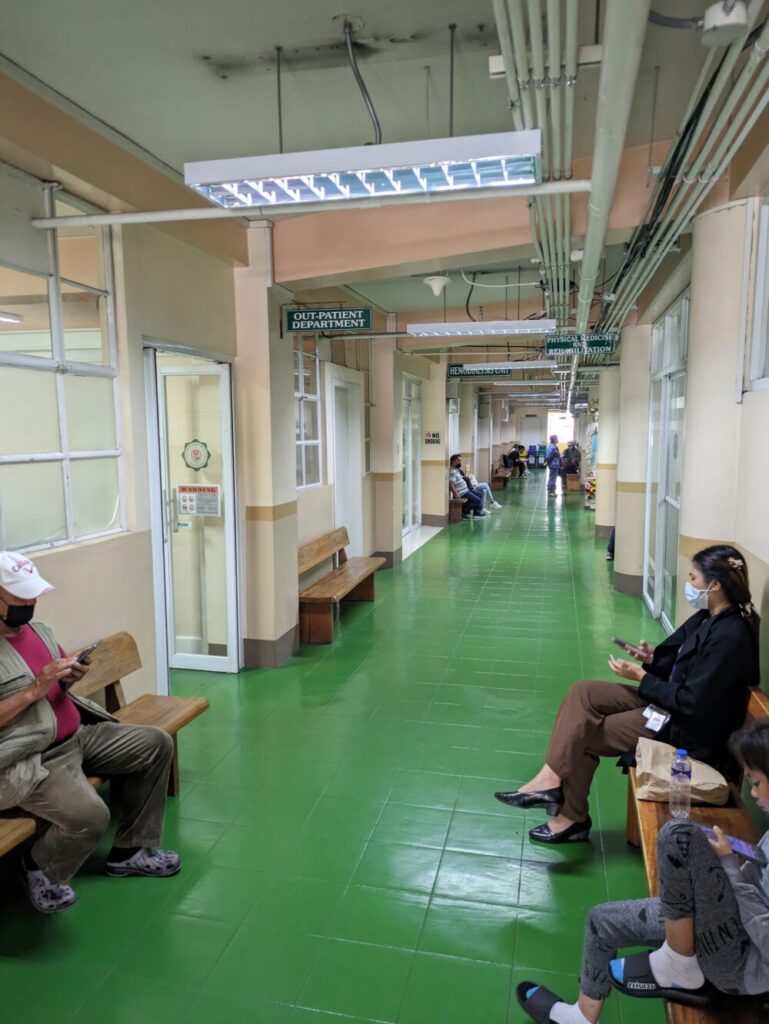
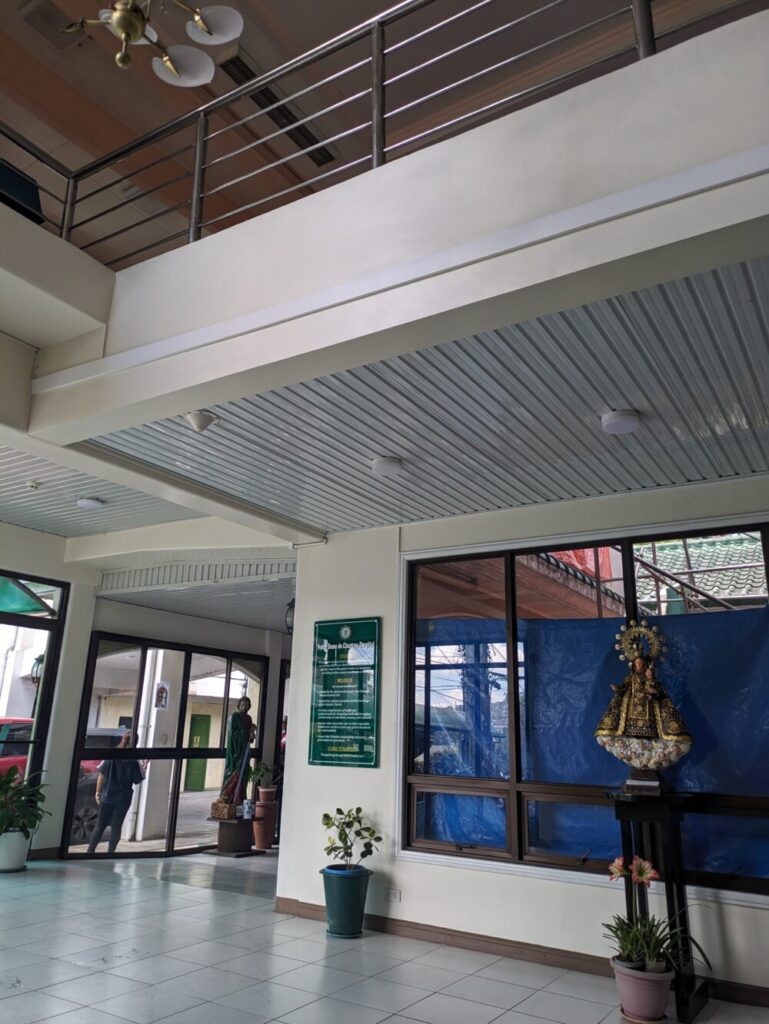
It is like an all-night emergency room in Japan that is always available to treat patients who are brought in on an emergency basis. The waiting time is usually extremely long, usually 3 to 5 hours, and it seems to make you feel even worse.
The first vaccination process
The first vaccination is administered according to the following procedure.
- Medical interview at triage
Application for waiting list. Priority is given to the most seriously ill patients
- Fill out the medical form
Make sure you have the school’s address and contact information as well
- Interview with the doctor
You will be asked to confirm the wound and its condition, and whether you have any allergies
- Vaccination
Multiple inoculations instead of one shot.
- Re-visit information and settlement
Four or five doses of vaccine are given at one time. The most common places to get the vaccine are near the four sites on both shoulders and both legs.
It will probably be a muscle shot, so the pain will be appropriate. However, you are about to die. You will have to grit your teeth and endure it.
Progress observation and precautions
After the first vaccination, you will be given a note or vaccination card with a schedule for your next visit that lists 3-5 vaccinations, so be sure to keep the dates and return to the clinic.
The vaccination card also lists the following symptoms of suspected rabies
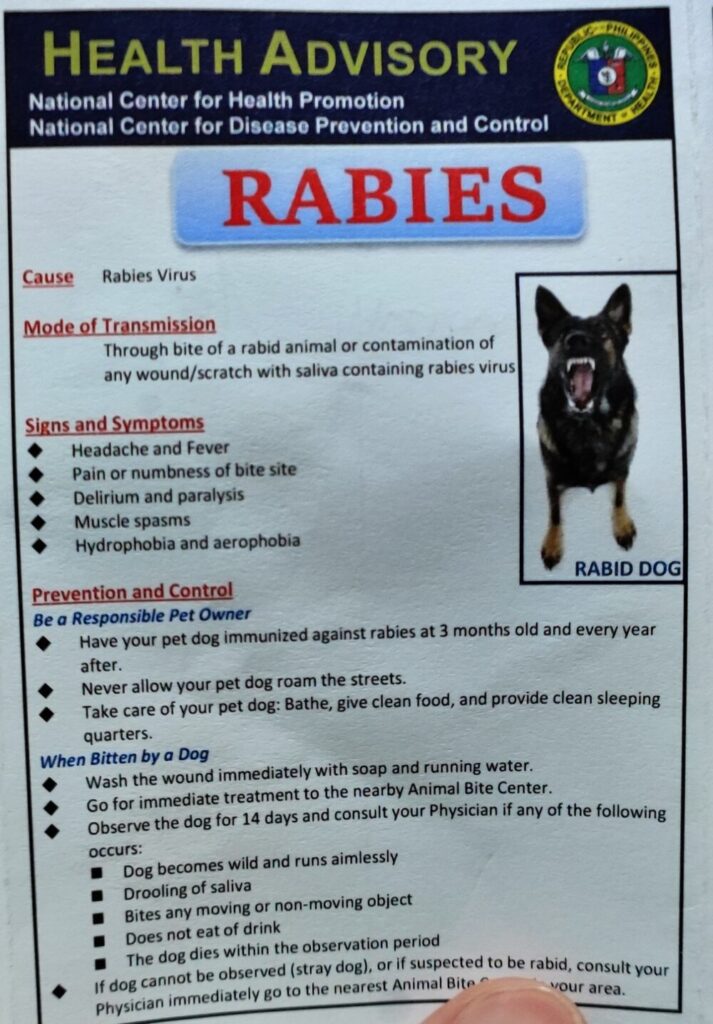
Suspected rabies symptoms
- Headache and fever
- Numbness of bite site
- Delirium and paralysis
- Muscle spasms
- Hydrophobia and aerophobia
If any of the above symptoms appear, head to the hospital immediately. It also describes lifestyle habits to be aware of during the next vaccine waiting period.
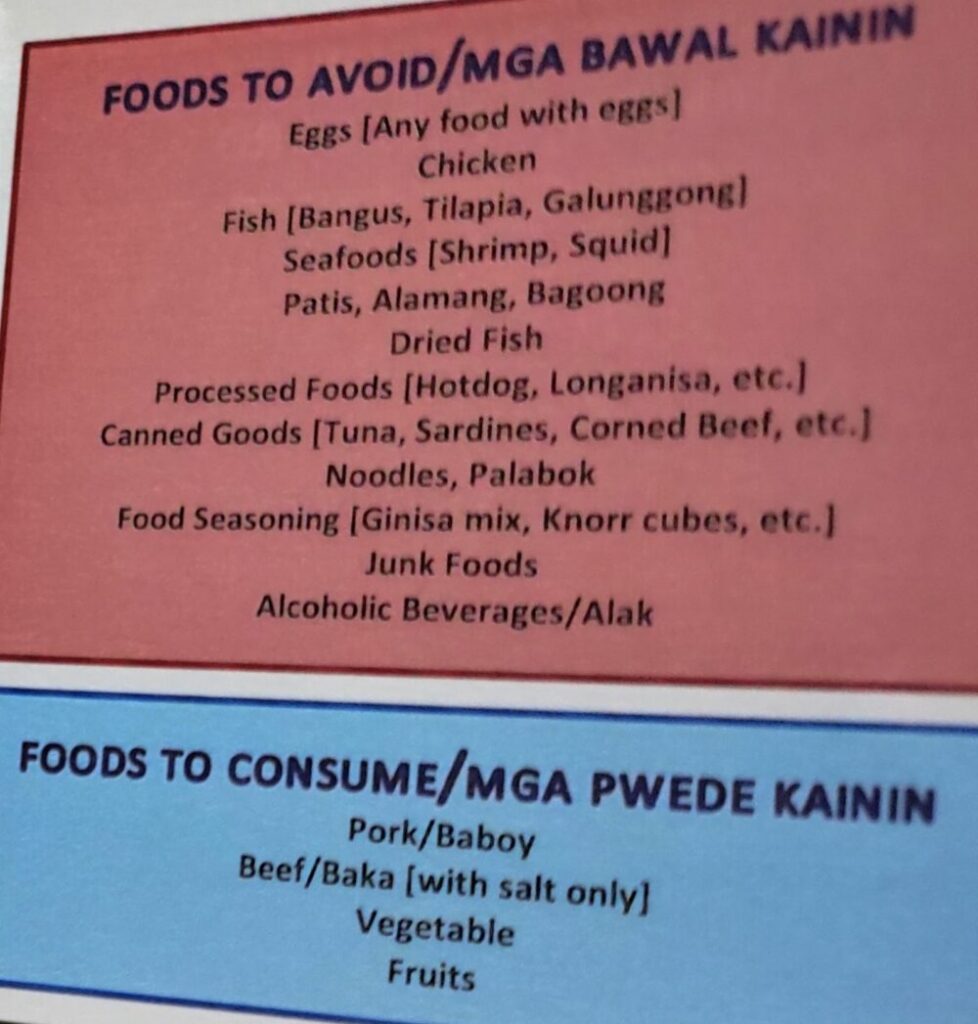
★Foods to avoid
Eggs, poultry, seafood, processed meat, canned food, noodles, junk food, alcohol, etc.
★Foods to eat
Pork, beef, vegetables, fruits
Eggs and chicken are not allowed, but pork and beef are OK, which seems a little strange. Other so-called unhealthy diets, such as processed foods and junk food, should also be avoided, they say.
Rabies Vaccination Fee
The fee for the first rabies vaccination is now as follows
(as of January 2025 at St. Louis Hospital)
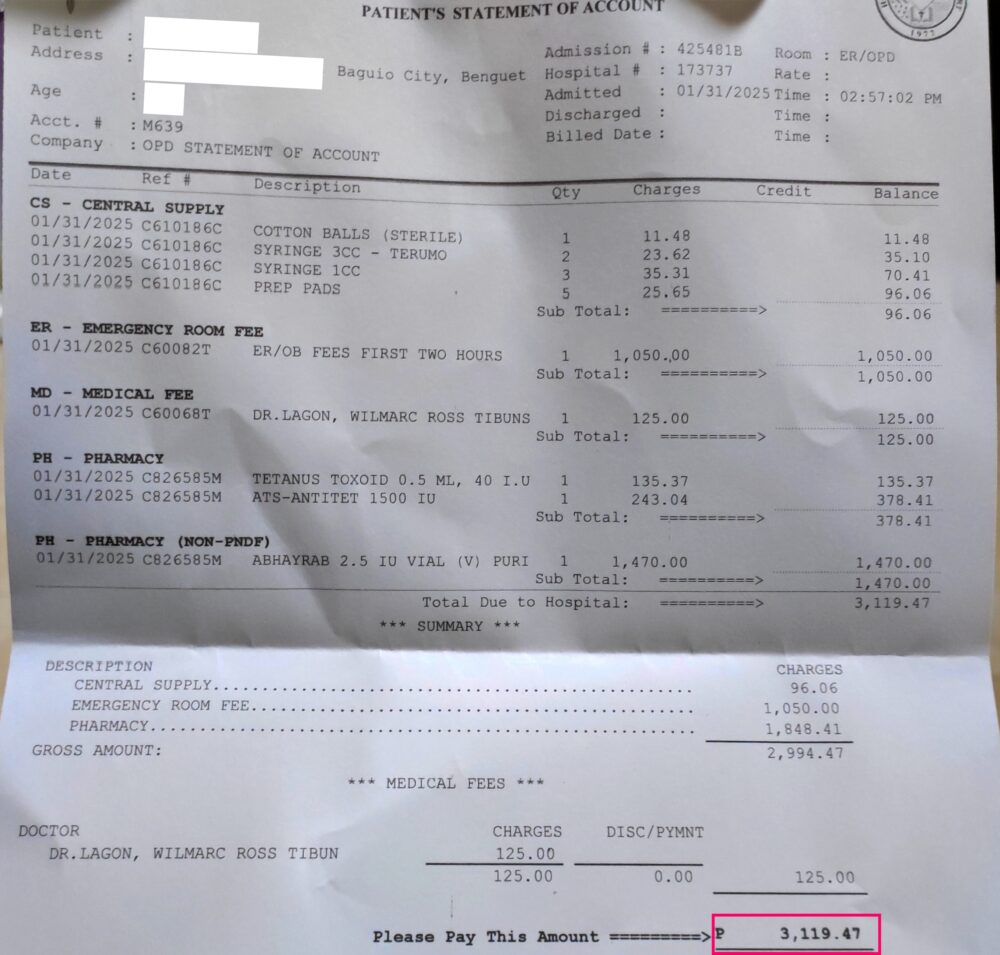
3,119.47peso
– Details –
Furniture and fixtures: 96.06 pesos
ER room usage fee: 1,050 pesos
Drug fee: 1,848.41 pesos
Doctor’s fee: 125 pesos
Since the fee for the first visit was not collected, the amount would have been tripled if three vaccinations were required; the total cost for the three vaccinations would be approximately 9,360 pesos.
In this case, she was able to pay the fee once by credit card and then bill the insurance company upon his return to Japan.
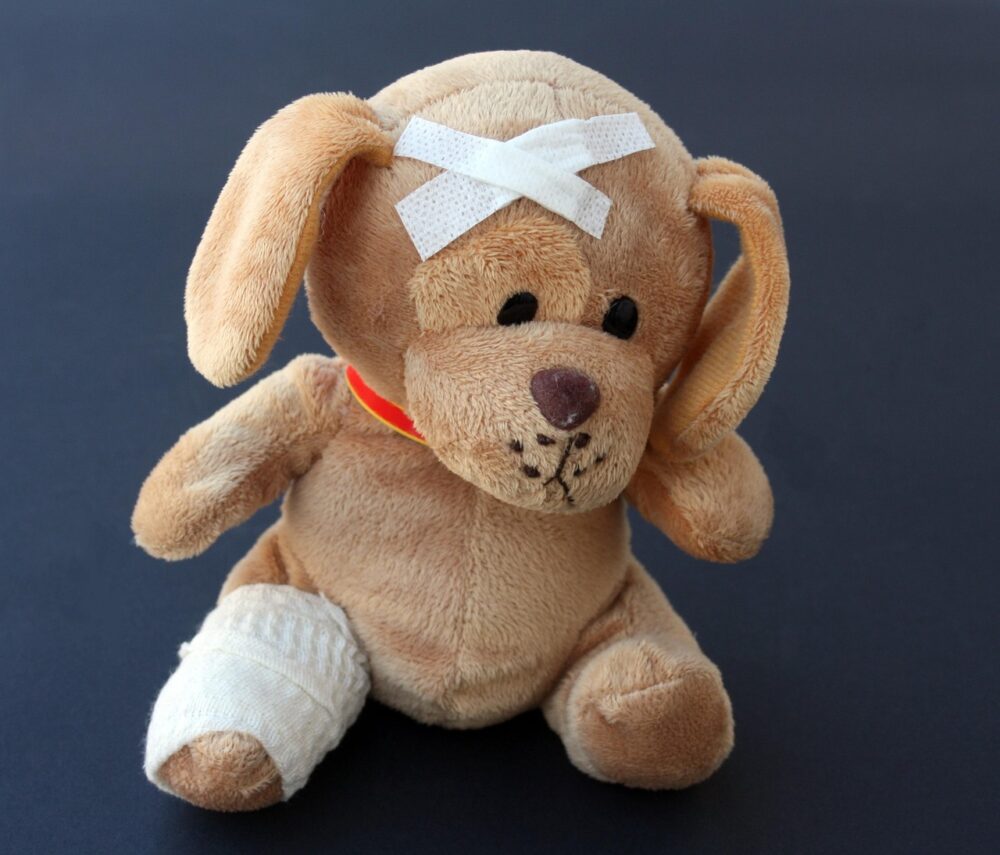
If you get vaccinated in advance in Japan, it is said to cost about 50,000 yen for several vaccinations. In terms of buying peace of mind, it may be a good idea to get vaccinated in advance in Japan, but it is still expensive….
Compared to the price in Japan, the price in the Philippines seems reasonable.
Epilogue
In this issue, I gave a real case study of a rabies emergency in a hospital in the Philippines.
As I described in detail, the first and most important thing is not to be in a situation where you need to go to the hospital.
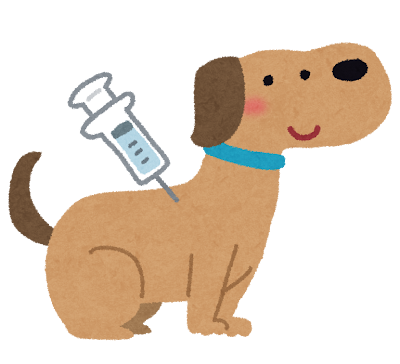
In an English-language school with several hundred students each year, only two were vaccinated. This may seem small, but it is by no means zero. Maybe there are cases where the person is not aware of the seriousness of the situation and neglects it.
Anyway, my point is one.

Stay away from dogs and cats in the Philippines!
You should not love animals until you return to Japan. It is too much of a waste of time, money, and pain to spend your study abroad period.
First of all, don’t approach them. Even if they approach you, keep your distance. Keep these things in mind and you will have a pleasant study abroad experience.

